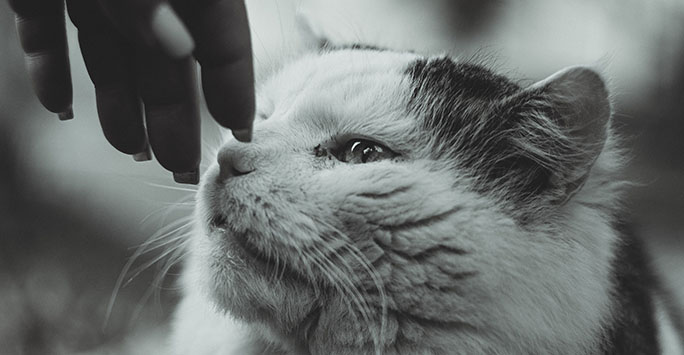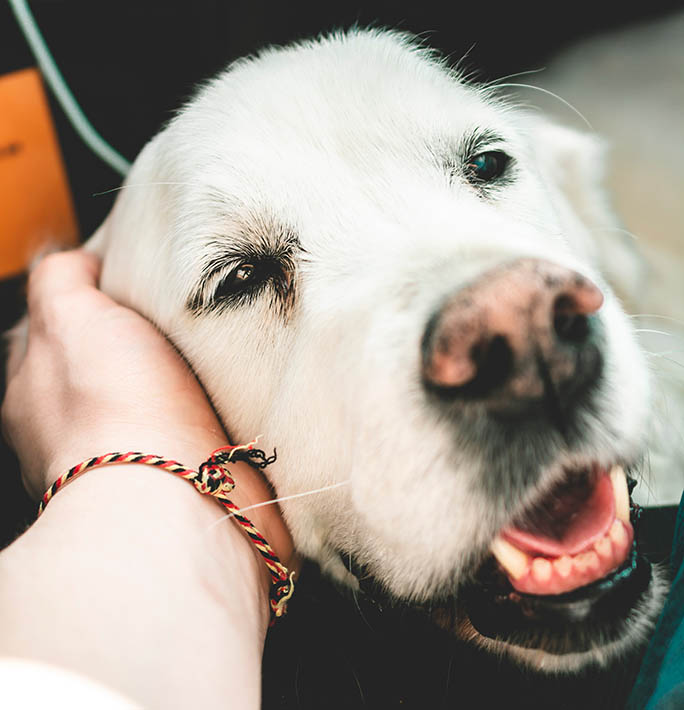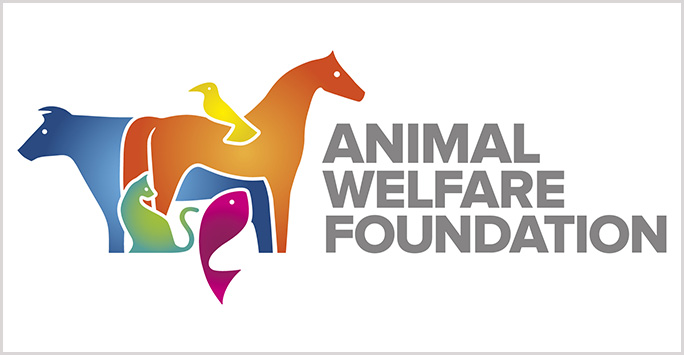Petconsent February 2021 blog - Research on consultations involving euthanasia
Posted on: 26 February 2021 by Dr Carol Gray, ESRC Postdoctoral Fellow in the School of Law and Social Justice. in Blog

This month, Carol Gray’s Petconsent blog takes a slight detour from shared decision-making between vets and clients in general consultations to explore end-of-life conversations. Carol received funding from the BVA Animal Welfare Foundation for a short research project on consultations involving euthanasia.
Thanks to the funding from the BVA Animal Welfare Foundation, I've been working on this short research project since the beginning of January 2021 until now.
So, what have I been doing? Using the SAVSNET database, set up by colleagues in Liverpool vet school, I read a random sample of the records from 1000 dog and 1000 cat consultations involving a discussion about euthanasia. I selected consultations where euthanasia was not carried out during the consultation, and examined reasons for the delay and what, if any, treatment was given to the animal patient in the time between this consultation and eventual euthanasia. I ‘coded’ each of the records to divide the text into different themes, analysing in detail 76 records for cats and 68 records for dogs.
What were my main findings? First, I found that the records written by vets during consultations only present one side of the story. They are an abbreviated record of what happened and often leave out some of the more interesting discussions, which is understandable in view of time pressures. Here are some of the highlights from the analysis of the consultations.
- It’s not always pet owners who are reluctant to agree to euthanasia. I found several examples where pet owners suggested euthanasia and vets disagreed, as in their view the animal’s quality of life was still good or they could provide further treatment. This was a surprise as several studies looking at euthanasia and how it affects vets suggest that in severely ill animals, it’s the vet who argues for euthanasia and finds that disagreement from the owner is a major stressor. Also, research has shown that it’s the discussions around euthanasia that vets find stressful, and not the euthanasia itself.
- If the end of life is near, pets are usually offered ‘palliative’ treatment to ensure that they are not in pain, to tempt their appetite or just generally make them feel better. However, few records contained notes on other methods of end-of-life care, for example, changes to the pet’s environment, the use of mobility aids, and other measures recommended in the guidelines for end-of-life care (PDF) produced by the American Animal Hospitals Association.
- My overwhelming finding was that these consultations were like negotiations, with one party advocating for euthanasia and the other refusing it. This was a surprising finding. I chose consultations where there was discussion about euthanasia, but it was not carried out during that consultation. I found that vets used strategies such as describing the pet’s quality of life in negative terms to the owner, or just giving a few days’ worth of palliative treatment, to try to prepare the owner for the decision. The AAHA guidelines recommend that there should be a clear plan for end-of-life care, with both parties sharing their concerns and working together. This did not seem to happen in many of the consultations that I analysed.

Photo by Alexandre Debieve on Unsplash
I have two proposed explanations for the latter finding.
First, UK veterinary consultations (averaging 10-15 minutes) are just too short to allow the extensive and empathic discussion required to draw up end-of-life care plans. Second, there seems to be a strong feeling amongst UK vets that they do not want to offer ‘pet hospice’ care equivalent to the pet hospice movement in the USA, where even ‘palliative sedation’ is offered for some patients. Many vets in the UK feel that this is just going too far. I think we need to have that discussion openly in the UK, with vets and pet owners. There are some excellent palliative care/end-of-life care vets in the UK already, and we should perhaps be using their expertise to introduce their techniques to more vets in regular general practice.
Coming back to shared decision-making, a proper discussion around end-of-life care for a pet involves true sharing of expertise, concerns, constraints and hopes. I think it is the ultimate shared decision-making conversation, which fits in well with the whole Petconsent mission.

Carol Gray
Dr Carol Gray is an ESRC Postdoctoral Fellow in the School of Law and Social Justice. After qualifying as a veterinary surgeon from the University of Glasgow, Carol spent 15 years in clinical practice. A career change to veterinary education included 13 years in the veterinary school at the University of Liverpool. Completion of a Masters in Medical Ethics and Law from Keele University laid the foundations for an obsession with informed consent in general, but particularly in the veterinary context. Carol was awarded her PhD from the University of Birmingham in 2019 and now holds an ESRC Postdoctoral Fellowship here in the School of Law and Social Justice, where she is developing the ideas from her thesis and bringing together consent and shared decision-making in the veterinary clinic.
As part of her ESRC Fellowship, Dr Carol Gray has been researching and writing monthly Petconsent blogs since December 2019.
Find out more about Carol's Petconsent research, which also includes a resource list of health information for pet owners.
Email Carol at: carol.gray@liverpool.ac.uk
Keywords: Law, Liverpool Vet School, pets, consent, Research, Pet owners, consultations, euthanasia, End of life care, Pet hospice movement.
